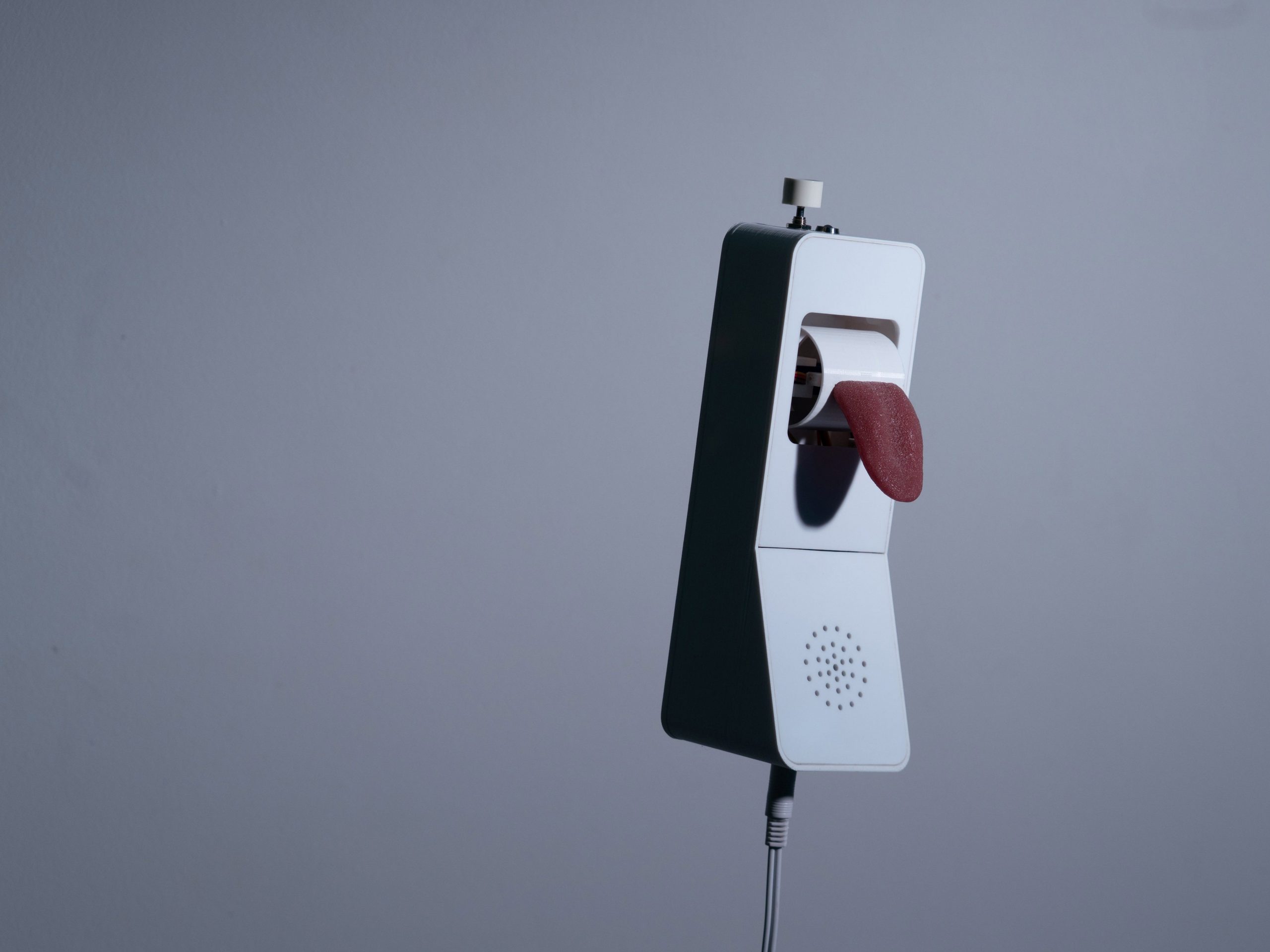- Two students at the Royal College of Art in London created a phone concept that translates speech and turns it into movement.
- Speech is felt through phones with a tongue-like silicon piece and a feeler.
- The design is a response to ‘skin hunger’ from COVID-19 isolation.
- Visit Business Insider’s homepage for more stories.
Phones and digital communication have become more important than ever as people communicate while isolating during the COVID-19 pandemic, and now phone conversations can become more physical.
Sandeep Hoonjan and Xianzhi Zhang, students at the Royal College of Art in London, created a design that turns speech into physical sensations.

The project is called “Feel the Conversation.” First, the devices connected to phones translate from one language to another, so any two people could potentially have a conversation.

Then, those devices also translate speech into haptic motion felt by the other person through silicon attachments. The attachments move based on the volume and intonation of the speech, creating a potentially unique feeling for any word or sentence.
Recorded by a microphone, louder speaking creates more exaggerated movements, and quieter speech creates smaller movements. Similarly, slower speech leads to slower movement, while faster speech creates faster movement.

The motion comes through two silicon attachments. One is shaped like a tongue, while the other has a brush-like style. Hoonjan and Zhang told Dezeen that they created the project in part to mimic parts of conversations that were missing while people were physically isolated because of COVID-19. They wanted people separated because of the pandemic to connect in a "more intimate" way.
The haptic touch of the attachments is similar to a cell phone's vibration. The creators said that they created the tongue attachment because it was recognizable, and would give people a way to relate to the project and what they were trying to do.

Hoonjan explained that many people are missing the feeling of touch, and other ways that people naturally feel closer during a conversation, like through body language. He cited an increase in 'skin hunger' as people miss out on touch that might be necessary for mental health.
"This project allows people to feel close to others in a way that is real, by using their speech as a reference point, but adding the feeling of touch," Hoonjan told Dezeen.

Right now, the device works up to a distance of 100 meters, and designers are working on a wireless model that would work over any phone call, connecting people even in different countries. The signal is digital, so it could also be sent over WiFi or saved to a USB.

